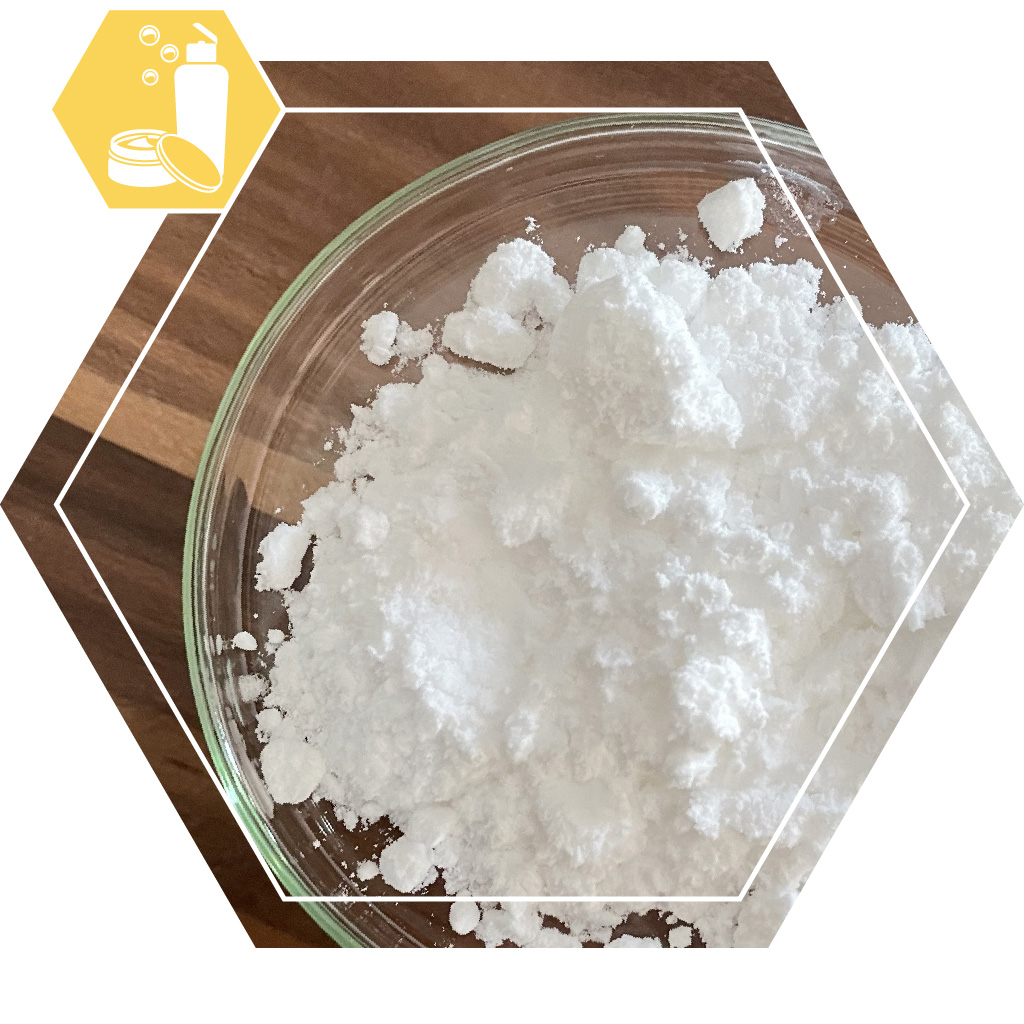Cosmetics raw material
Description
This text has been automatically translated and may contain errors.
Methylparaben is a preservative for use in cosmetics. It protects the product from spoilage by microorganisms.
Use
Methylparaben as such can be stirred into the product to be preserved, as the last step in the manufacturing process. It is better to dissolve it before use in a suitable solvent, for example phenoxyethanol. Multi-phase products such as emulsions: use in an aqueous phase, it may not dissolve completely, but due to sufficient agitation (stirring) the distribution in the final product is often sufficient.
Use 0.2 - 0.4% in the final product. For professional cosmetics: that is the maximum allowed dose, we recommend not to exceed this. At a lower dose, the effectiveness is quickly too low to make sense.
Methylparaben works very well against fungi, but less well against bacteria. In most cases, therefore, another preservative will be required, such as phenoxyethanol.
Dry, so DO NOT refrigerate. Store in a cool, dark place in a well-closed container. Keep out of reach of children.
De Hekserij does not sell products intended for use in foodstuffs or for other internal use. This product is NOT an exception.
Properties
Methylparaben is supplied as a fine white powder with a peculiar odor that is somewhat reminiscent of algae. The purity is at least 99% and the substance has a fairly long shelf life.
Methylparaben is one of the most commonly used preservatives in cosmetics, due to a combination of pleasant properties:
- It is very active against fungi and Gram positive bacteria
- It is, especially for a preservative, very little harmful to the health of people, animals and plants
- It usually breaks down easily and quickly in the environment
- It occurs naturally in various plants and animals and could therefore be called ""natural""
- It is active in a fairly wide pH range, a pH of 5-6 is ideal, but in many cases a pH of 3-8 is also possible
- It has been used as a preservative in food, medicine and cosmetics for a century and is very well researched
Of course there are also disadvantages: parabens do not always go well with highly ethoxylated substances such as polysorbate 20 and polysorbate 80 and to a lesser extent methyl paraben becomes completely or partially ineffective with, for example, lecithin and protein-like substances such as hyaluronic acid.
Furthermore, methylparaben may work well against fungi, especially against Gram-negative bacteria it has little or no effect. So usually an additional preservative is needed.
One reason not to use methylparaben is if you are hypersensitive to benzoic acid and related substances. In that case, do not use sodium benzoate, benzoic acid and tincture of benzoin. Incidentally, this hypersensitivity mainly affects damaged skin, a reaction is unusual on intact skin.
Paraben madness
A disadvantage of a completely different nature is the fact that parabens have been in the news a lot in recent decades. We kept and keep a close eye on this news and all other information and - like almost all scientific institutions, consumer organizations, governments and serious environmental organizations - we continue to believe that parabens are safe and environmentally friendly substances, methylparaben is no exception. If there are new developments that would indicate otherwise, we will of course revise our opinion.
In Denmark, propylparaben and butylparaben (ie NOT methylparaben) are banned in cosmetics for children under 3 years of age. Not because of carcinogenicity, but because according to a certain (Danish) study it could possibly be harmful to the development of young children.
The generally strict SCCS working group of the European Union thinks this is a bit exaggerated, but advises, in order to exclude any risk, not to use propylparaben and butylparaben in products in the 'nappy area' (i.e. everything that is passed through the diaper). covered) for babies under 6 months. There is no reason to avoid parabens for all other applications, even after repeated new research. Methylparaben can also be used without objection in products specifically for babies. We also recommend that you do not make baby products yourself, regardless of which products. Babies are more vulnerable and extra requirements are therefore imposed on baby cosmetics such as ointment and oil.
Sustainability
Methylparaben occurs here and there in nature. An interesting occurrence is that a certain water beetle, the yellow-rimmed water beetle, uses methyl paraben against fungal growth. Tahiti vanilla pods naturally contain methyl paraben, which partly determines the taste of the Tahiti vanilla. In fruit flies from the Dacus family, both methyl and propyl paraben are present in the droppings. It is also a dog pheromone: bitches in heat excrete this substance. Don't worry about that: it only works if other pheromones are also present.
Although it occurs in nature, it is synthetically made for use in cosmetics on the basis of non-renewable raw materials such as petroleum and coal. It is highly biodegradable in the environment, provided the concentration is low and sufficient oxygen is present. Because this is sometimes not the case, the substance is still classified as harmful to aquatic organisms.
Packaging
We pack this substance in white plastic (PP) jars with lids.
Dangers
Methylparaben is classified as a dangerous substance, with the following characteristics:
WARNING
H412 - Harmful to aquatic life with long lasting effects.
An allergic reaction is possible, but is not common on undamaged skin.
Codes
Item number: 10311
English name: Methyl paraben
EC number: 202-785-7
CAS Number EU: 99-76-3
CAS Number TSCA: 99-76-3
INCI: METHYL PARABEN"




